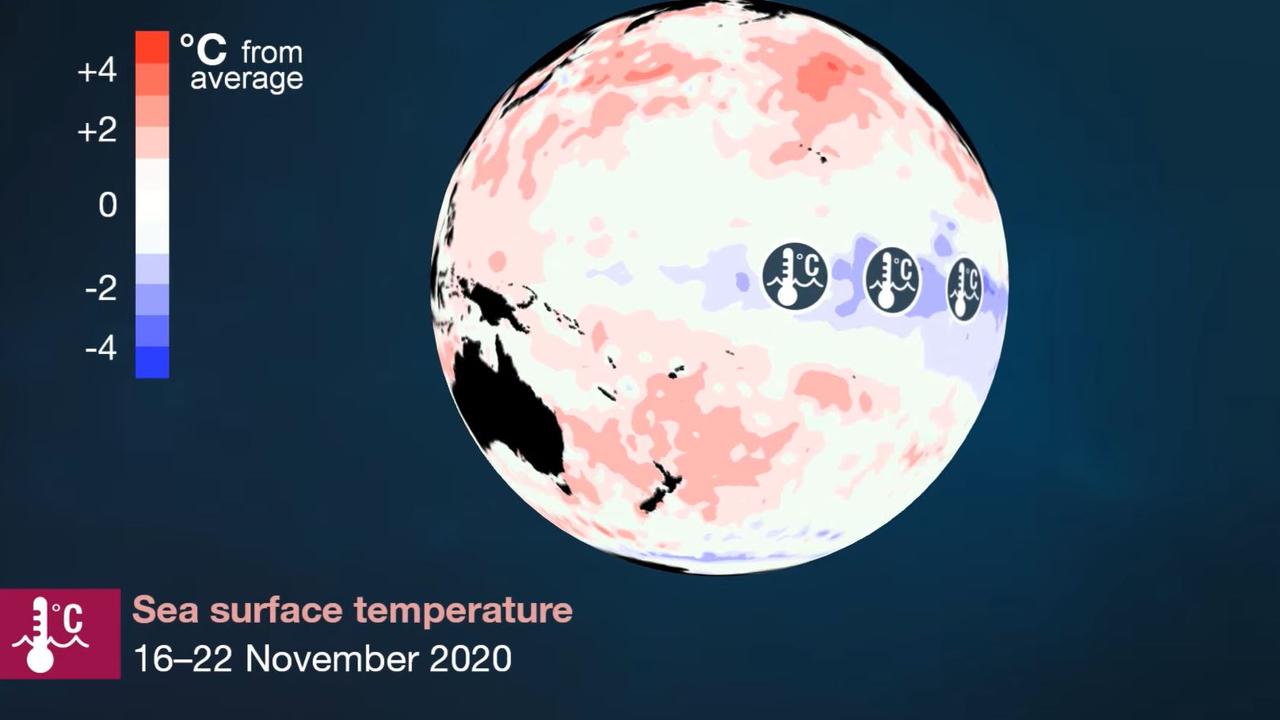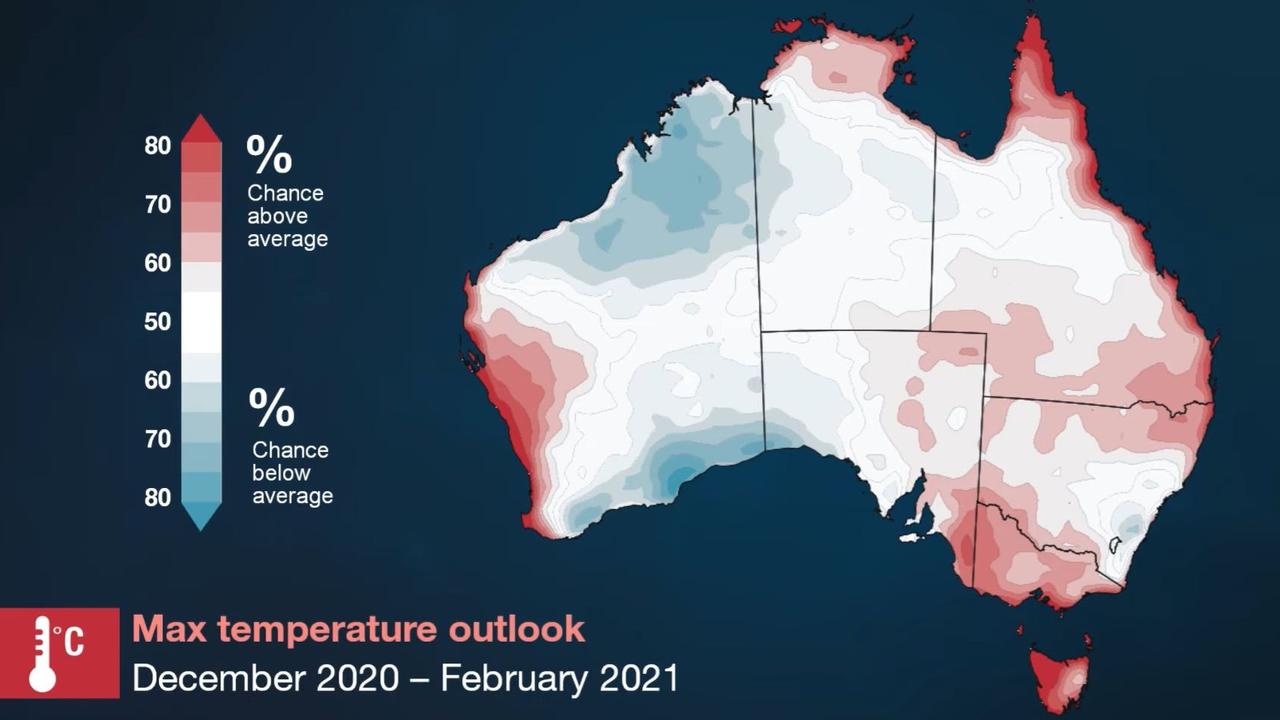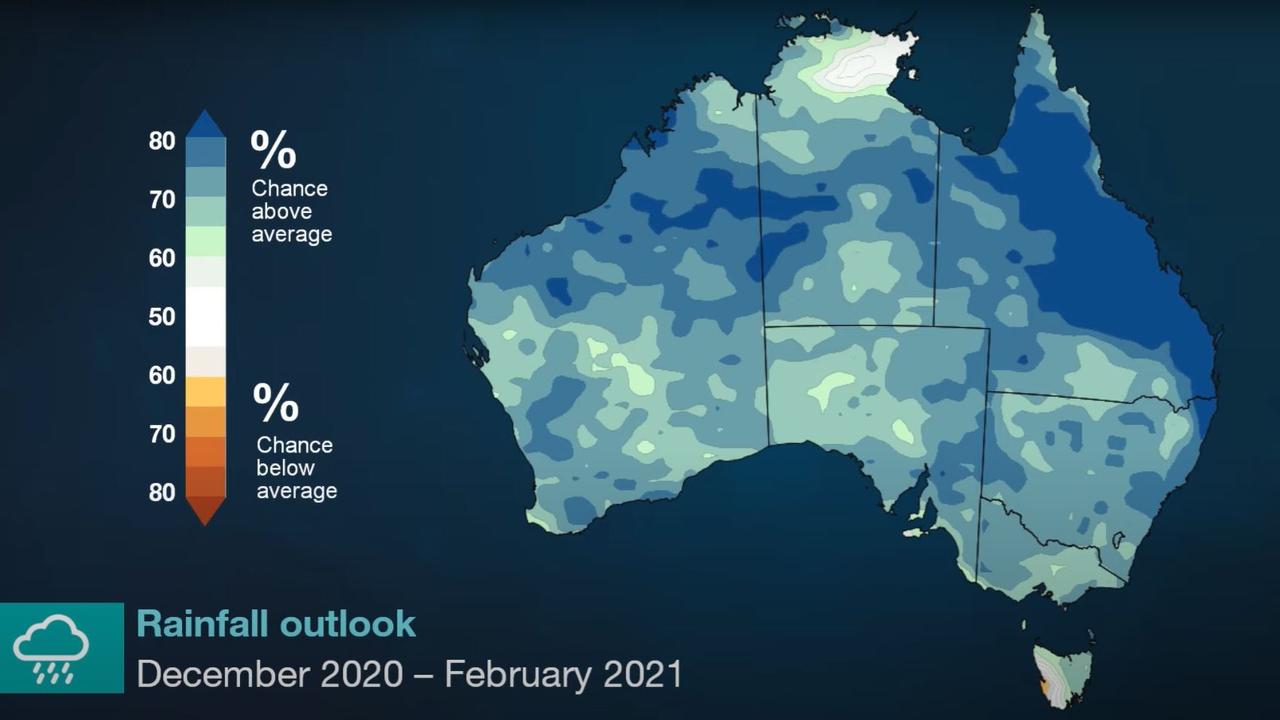Wettest summer for 10 years still on cards despite scorching November
La Nina has failed to deliver cooler conditions and rain. But meteorologists say a sodden summer is due and some of our big cities are flood risks.
Despite Australia sweltering through its hottest November on record, this summer is still shaping up to be wetter, and potentially cooler, than recent years due to the La Nina climate event.
By some estimations it could be the wettest summer for 10 years.
A report released today has said that flooding is Australia’s costliest natural disaster. And hundreds of thousands of residents in western Sydney and Melbourne could be at increased risk
A La Nina was declared by the Bureau of Meteorology (BOM) in late September. The cooling phase of the El Nino Southern Oscillation (ENSO), a La Nina bubbles up when strong winds blow from east to west which drags cooler water up from the depths of the ocean in the central and eastern equatorial Pacific.

RELATED: La Nina declared: Unexpected effect of climate driver
These winds then push warmer water off the coast of Australia closer to the continent and can bring more moisture and windier conditions.
“Australia can expect a summer of floods, storms and cyclones as La Nina conditions are officially declared,” said Sky News Weather senior meteorologist Tom Saunders at the time.
The declaration of the climate driver has excited meteorologists because it’s the first fully fledged La Nina to occur since 2010-2012’s event.
That event produced Australia’s wettest 24 months on record. So expectations have been high 2020s La Nina might do the same.
But, so far, that’s not panned out. It’s been wet in some areas, but also dry and hot. According to the BOM, last month was Australia’s hottest November since records began which can go back in some places for over a century.
Almost 60 individual towns and cities across Australia also recorded their hottest November day with Andamooka, in the South Australian Outback, reaching 48C in the last week of
November. Fraser Island has seen an out of control bushfire rip through the tourism hot spot.

WHY LA NINA’S EFFECTS HAVE BEEN LESS THAN EXPECTED
Dr James Goldie of the Climate Change Communication Research Hub at Monash University told news.com.au that the effects of La Nina had been stymied by other climate drivers.
“ENSO is one of the cogs in the climate system but it’s not the only climate driver.
“It doesn’t mean La Nina isn’t happening, it’s just that something else is dominating the weather,” he said.
“In November, the Madden-Julian Oscillation was in the Indian Ocean and that was pulling moisture away from Australia temporarily, so that paused the La Nina effects.”
The Madden-Julian Oscillation is an eastwards regular pulse of cloud and rainfall located near to the equator that brings rainfall to tropical areas.
It can herald the beginning of the monsoon season for Northern Australia.
That driver is now inching closer to Australia again which is leading to increased rainfall around of north Western Australia and the Top End.


The BOM is continuing to put its money on a wetter than average summer.
In its latest climate outlook, the organisation said there was 75 per cent chance for north Western Australia, eastern Queensland and the New South Wales coast to see more moisture up until February and a more than 60 per cent chance elsewhere.
A positive Southern Annual Mode, another climate driver which emanates from the Antarctic, could also increase rainfall particularly around southern Australia.
But the BOM has also warned heatwaves and bushfires were likely and days could actually be warmer in coastal Queensland and Western Australia as well as Victoria and Tasmania.
“The La Nina of ten years ago was very strong,” said Dr Goldie.
“But we have to remember we live in a world with climate change and that’s happening alongside all the other climate drivers.
“The BOM has forecast days in summer and night time temperatures almost certainly above average and a lot of that is the reality of living with climate change.”
FLOOD RISK FOR SYDNEY, MELBOURNE
A report released today by the Geneva Association, a Swiss based insurance think tank, and Australian insurer IAG Group – which owns the NRMA and CGU brands – found that more needed be done on a community level to mitigate flood threats.
“While floods can cause widespread damage to homes across large areas, they don’t affect geographic regions uniformly, so a localised approach that considers the needs of each area has its benefits,” said IAG executive manager of natural perils Mark Leplastrier.
The report found the Hawkesbury-Nepean flood plain, in Sydney’s west, was of particular concern due to the number of people who live there and future development in the area.
A severe flood could see 134,000 people required to evacuate with that number forecast to double over the next 30 years.
“Over 25,000 residential properties and 2 million square metres of commercial space are currently subject to flood risk, and this will increase significantly in the coming years,” the report said.
“Insurers describe the existing flood risk on the Hawkesbury Nepean flood plain as the most significant and unmitigated community flood exposure in the country.”
Other parts of western Sydney and Melbourne are also susceptible to surface water and local flooding which can cause flash flooding from intense, short-duration bursts of rainfall.
“A significant proportion of the inhabitants of these areas are new immigrants from overseas and people of lower socio economic status, many of whom cannot afford flood insurance,” the report stated.
The BOM has warned that in 2020 and going into 2021 there is an increased risk of flooding across eastern Australia if La Nina comes into its own. The chances are that it will.




